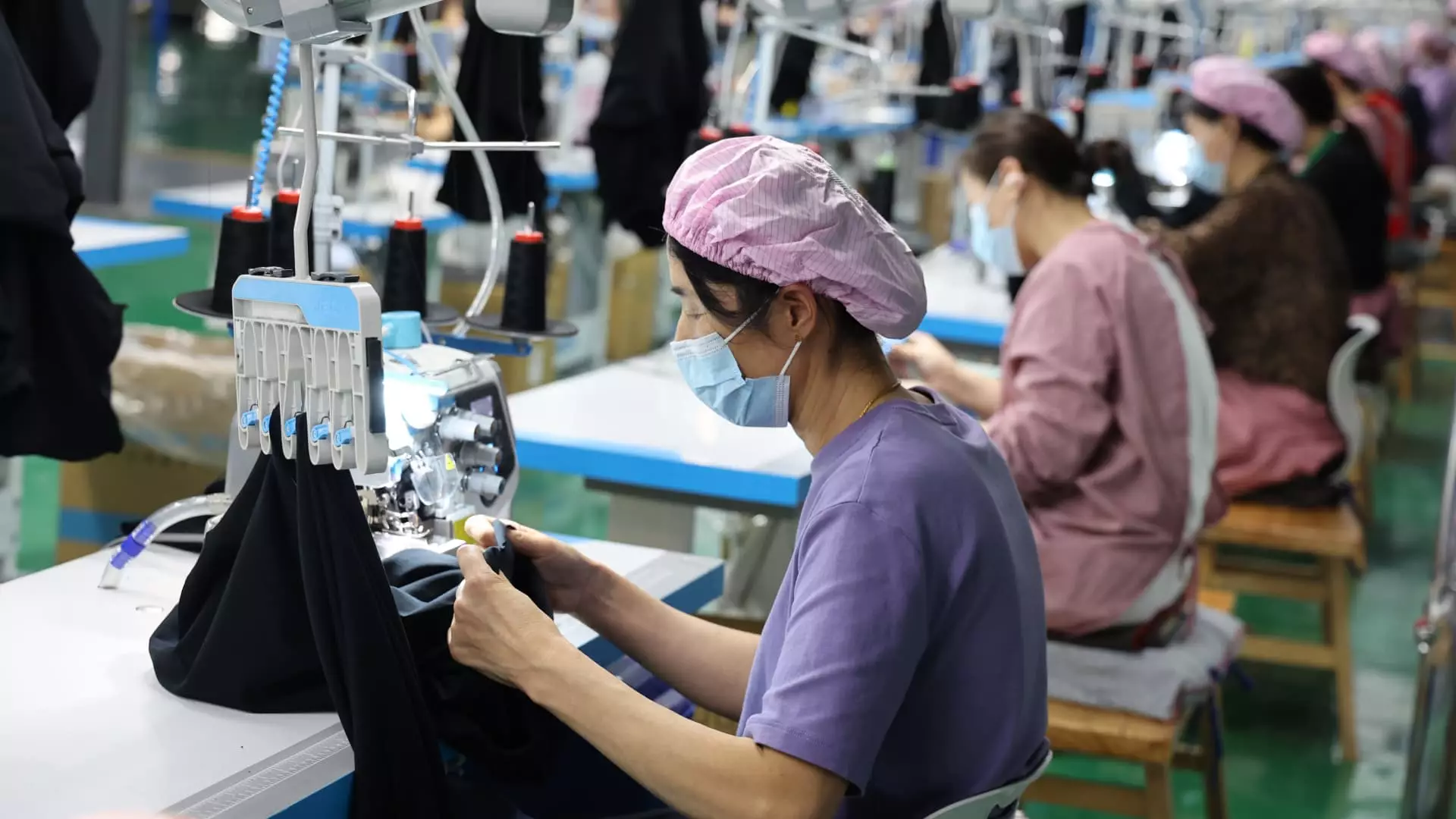The U.S.-China trade war has morphed from a mere policy dispute into a significant economic battleground, with millions of lives hanging in the balance. As Chinese manufacturers grapple with U.S. tariffs, the immediate impact shifts from boardrooms to factory floors, with dire consequences for the workforce. Reports reveal that up to 20 million Chinese workers, who primarily rely on exports to the U.S., are at risk of job loss. These aren’t abstract numbers; they represent families, communities, and livelihoods under threat due to geopolitical maneuvering. Companies like Woodswool, an athleticwear manufacturer, and others are already feeling the heat, reporting that canceled orders have forced them to idle production capacity for two to three months.
The drastic response from manufacturers, such as temporarily furloughing employees, underscores a harsh reality: the consequences of trade policies can ripple through societies, leading to economic instability on a massive scale. Cameron Johnson, a senior partner at Tidalwave Solutions, emphasizes how factories in pivotal export hubs are halting operations, which paints a grim picture of industrial communities that could see the end of their local economies.
Small Businesses: The Hidden Casualties
The plight of small businesses is particularly illustrative of the dangers entrenched in this trade conflict. For these entities, the stakes are highly personal. With the abrupt doubling of tariffs, many firms face insurmountable challenges. Ash Monga, CEO of Imex Sourcing Services, aptly characterizes the situation as “way bigger” than the repercussions of the COVID-19 pandemic. The ramifications are particularly severe for small enterprises with limited resources—those which may not even survive this onslaught of unexpected tariffs.
The impact on small businesses highlights a fundamental flaw in trade policy. The extensive focus on tariffs disregards the reality that larger corporations typically have more resources to weather such storms, thereby leaving smaller firms to flounder. Monga’s response—launching a “Tariff Help” website—merely scratches the surface of a larger systemic issue: a trade war that endangers the lifecycle of smaller businesses, pushing them towards obsolescence in a market increasingly dominated by the titans of industry.
Creative Adaptation Amid Crisis
Despite the alarming developments, the resilience of Chinese manufacturers shines through as they attempt to pivot their strategies. The transition into domestic sales through e-commerce platforms represents a noteworthy countermeasure. Companies like Woodswool have turned to livestreaming sales via platforms like Baidu to capture the local market’s attention. While this move reflects adaptive ingenuity, it also exposes the reality that exporting businesses must now contend with an unfamiliar consumer landscape. The shift necessitates not only new marketing strategies but an entire rebranding effort that aligns more closely with local preferences.
The emergence of virtual humans and AI-driven sales tactics through platforms illustrates both the innovative spirit and the desperate measures companies are willing to undertake. These technologies may deliver short-term gains, but they also provoke questions regarding consumer trust and the long-term loyalty to brands that had primarily catered to U.S. markets. This adaptation may work temporarily but risks alienating segments of the domestic consumer base that prefer authentic, human interactions—something a virtual entity struggles to replicate.
Global Dynamics on the Shift
As companies reevaluate their export strategies, the search for alternative markets intensifies. Some manufacturers are bypassing traditional relationships with the U.S. in favor of diversification into Latin America and Europe. Liu Xu’s e-commerce venture in Brazil serves as a crucial reminder of how the fabric of global trade is evolving in response to U.S.-China tensions. While these adjustments indicate proactive measures, they also illuminate significant vulnerabilities. Navigating new markets comes with its own burdens, including fluctuating exchange rates and evolving consumer behaviors.
Additionally, as domestic operations become more complex, companies often find it challenging to adapt to new regulations and cultural norms. The thread of economic interdependence binds nations together, but when challenged, it can also unravel quickly. For many businesses, the path to new markets is fraught with uncertainty, and the economic landscape is no longer as predictable as it once seemed.
The Bigger Picture: Long-Term Implications
While immediate job losses and business adaptations are front and center, the long-term implications of the U.S.-China trade war could be far-reaching. The stagnation in U.S.-China negotiations accentuates a sense of competing ideologies, reflecting a deeper divide that could reshape global trade frameworks for decades. Michael Hart, president of the American Chamber of Commerce in China, hints at an ongoing struggle that may shift business models permanently.
Trade wars often lead to a reconfiguration of alliances and partnerships, urging companies to recommit to allies less impacted by such geopolitical tensions. Companies are already beginning to diversify their production capacities, re-evaluating their supply chains to withstand future shocks. The question remains: what are the long-term impacts on trade relationships, labor markets, and the interplay between nations as they reshape their economic futures amidst escalating tariffs and strained relations? This trade war may very well redefine what we understand about global commerce and interdependence in the 21st century.

